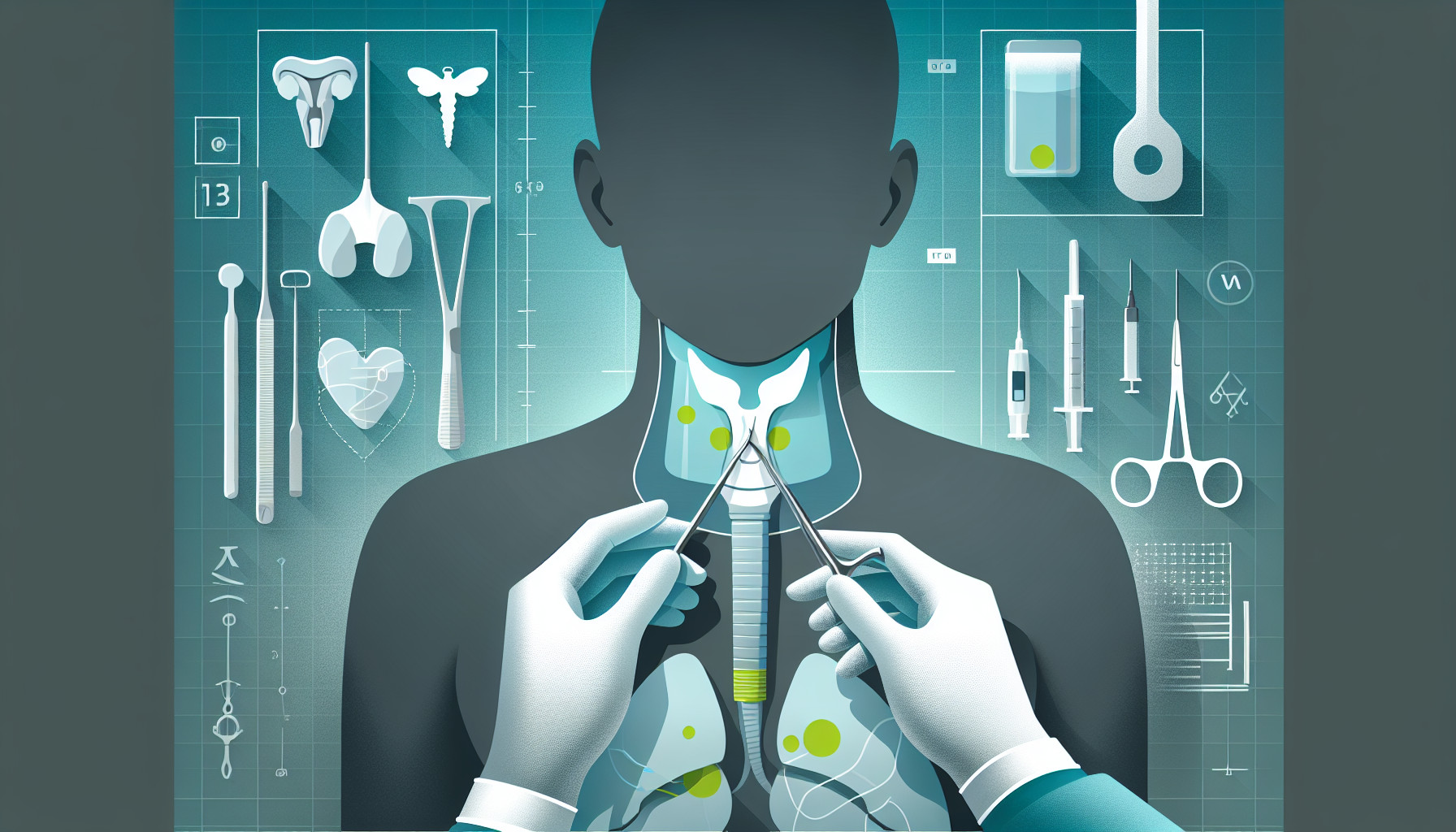Our Summary
This research paper is a review and analysis of different techniques used during thyroidectomy, a surgery to remove all or part of the thyroid gland. The study compares the traditional “clamp and tie” method, which has been used since the 19th century, with a newer method that uses energy-based devices (EBDs), specifically a tool called the FOCUS harmonic scalpel.
The study found that this new technique is safer and more effective than the traditional method. It reviewed 43 different trials involving over 10,000 patients and found that the newer method resulted in fewer patients having temporary voice box paralysis (3.99% for the new method vs 5.23% for the old) and fewer patients experiencing a decrease in calcium levels (11.3% for the new method vs 15.4% for the old).
The paper concludes that the new technique is less likely to cause damage to the voice box nerves and parathyroid glands, and also reduces the risk of post-surgery bleeding and neck blood clots, which are rare but can be fatal.
FAQs
- What is the traditional method used during thyroidectomy and how does it compare to the newer method?
- What are the benefits of using the FOCUS harmonic scalpel in thyroidectomy surgeries?
- What are the risks associated with the traditional “clamp and tie” method in thyroidectomy surgeries?
Doctor’s Tip
A helpful tip a doctor might tell a patient about thyroidectomy is to ask about the use of energy-based devices, such as the FOCUS harmonic scalpel, during the surgery. This newer technique has been shown to be safer and more effective than the traditional “clamp and tie” method, reducing the risk of complications such as voice box paralysis and decreased calcium levels. Patients should discuss with their surgeon the best approach for their specific case and inquire about the use of energy-based devices to potentially improve their surgical outcome.
Suitable For
Patients who are typically recommended for thyroidectomy include those with:
Thyroid cancer: Thyroidectomy is often recommended for patients with thyroid cancer to remove the cancerous cells and prevent the spread of the disease.
Large goiters: Patients with large goiters, which are enlarged thyroid glands, may require thyroidectomy to relieve symptoms such as difficulty swallowing, breathing, or speaking.
Hyperthyroidism: Patients with hyperthyroidism, a condition in which the thyroid gland produces too much thyroid hormone, may benefit from thyroidectomy to reduce hormone levels and alleviate symptoms.
Thyroid nodules: Patients with thyroid nodules that are causing symptoms such as difficulty swallowing or breathing, or that are suspicious for cancer, may be recommended for thyroidectomy.
Recurrent thyroid nodules: Patients with recurrent thyroid nodules that have not responded to other treatments such as medication or radioiodine therapy may be candidates for thyroidectomy.
Graves’ disease: Patients with Graves’ disease, an autoimmune disorder that causes hyperthyroidism, may require thyroidectomy if other treatments are ineffective or if the disease is severe.
Toxic multinodular goiter: Patients with toxic multinodular goiter, a condition characterized by multiple nodules in the thyroid gland that produce excess thyroid hormone, may benefit from thyroidectomy to reduce hormone levels.
It is important for patients to discuss their individual case with their healthcare provider to determine if thyroidectomy is the best treatment option for them.
Timeline
Before thyroidectomy:
- Patient may undergo blood tests, imaging studies, and possibly a biopsy to confirm the need for surgery
- Patient may need to stop certain medications and supplements before surgery
- Patient will meet with the surgeon to discuss the procedure and potential risks
- Patient may need to fast before surgery
During thyroidectomy:
- Patient is put under general anesthesia
- Surgeon makes an incision in the neck and removes all or part of the thyroid gland
- Surgeon may use either the traditional “clamp and tie” method or the newer energy-based device method
- Surgery typically takes 2-3 hours
After thyroidectomy:
- Patient is monitored in the recovery room for a few hours
- Patient may experience pain, swelling, and difficulty swallowing
- Patient may need to stay in the hospital overnight for observation
- Patient will need to take thyroid hormone replacement medication for the rest of their life
- Patient will have follow-up appointments with the surgeon to monitor for any complications
Overall, thyroidectomy is a safe and effective treatment for thyroid conditions, and the newer energy-based device method may offer additional benefits in terms of reducing complications and improving outcomes for patients.
What to Ask Your Doctor
- What are the potential risks and complications associated with thyroidectomy?
- How does the use of energy-based devices, such as the FOCUS harmonic scalpel, compare to the traditional “clamp and tie” method in terms of safety and effectiveness?
- Will I need to take any medications or follow a special diet after the surgery?
- How long is the recovery period after a thyroidectomy and what can I expect during this time?
- What follow-up care will be needed after the surgery?
- Are there any specific activities or behaviors I should avoid after the surgery?
- Will there be any long-term effects on my thyroid function or overall health after the surgery?
- How will my voice be affected by the surgery and will there be any risk of permanent voice changes?
- Are there any alternative treatments or procedures that could be considered instead of a thyroidectomy?
- How experienced is the surgical team in performing thyroidectomies using the newer energy-based devices?
Reference
Authors: Cirocchi R, Matteucci M, Lori E, D’Andrea V, Arezzo A, Pironi D, Avenia S, Randolph J, Tiraboschi I, Tebala GD, Popivanov GI, Sorrenti S. Journal: Int J Surg. 2024 Dec 1;110(12):8083-8096. doi: 10.1097/JS9.0000000000002113. PMID: 39806747
